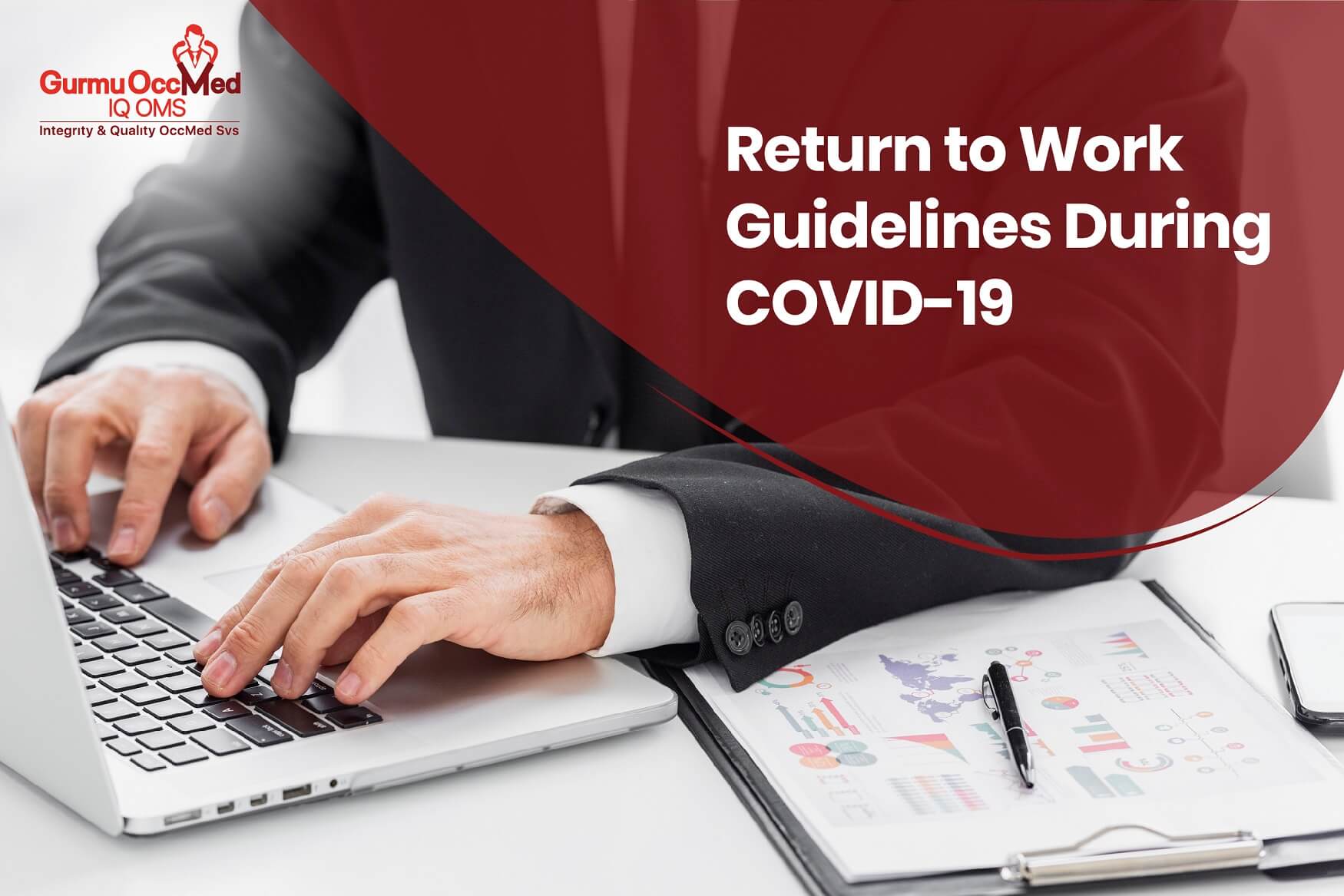- Office Hours: Mon-Fri 8AM to 5PM
- Email: dabi@gurmuoccmed.com
- Call Us: (559) 587-5587


Ever since the novel coronavirus 2019 was detected in China last December 2019, it rapidly spread worldwide that caused drastic changes not just in the healthcare industry but also in the economy. In only three months, WHO declared it a pandemic. It caught us off guard and no one was prepared, not even the wealthiest countries around the world. The government had to set public health measures such as social distancing, wearing masks, and work restriction to stop it from spreading. Many businesses and organizations have also placed several measures within their workplaces to ensure the safety of the employees. Even with the work from home set up, many workers were still affected.
As many places have successfully flattened the curve, reopening the economy is now possible. The government and businesses are working hand in hand in examining strategies and safety measures for workers to have a safe and healthy return to work during the COVID-19 pandemic. Employers play a role in protecting workers, their families, and society at large. Implementing protective and preventive measures may require necessary changes to the processes and practices of the workplace. It is important to note that each organization should establish its own pace when it comes to bringing back employees to the workplace.
To establish a safe working environment for workers amidst the coronavirus pandemic, employers must consider the following:
If your workplace has been closed for quite some time, you need to determine which workers will have to report back to the office. It is unlikely that all of your workers will be able to return to your workplace at once. If you have employees who can continue working at home, especially if their work does not require them to physically go to the office, then they may do so. This is to avoid congestion and to practice physical distancing properly in the workplace.
Before the employees are back in the office, make sure that you clean and disinfect the workspaces as well as the tools and equipment used by the employees. Establish daily cleaning protocols to ensure workstations and other facilities are always clean and tidy. Look into the workplace’s layout and formulate strategies that could help in implementing physical distancing and other protective measures before the workers return to work.
Maintaining an open dialogue with your workers is vital to formulate effective plans and strategies in the workplace systematically. Workers can make important contributions in identifying and assessing the risks in the workplace. During the gradual resumption of your operation, make sure to update your existing control measures and that your employees are aware of these changes.
When discussing preventive and control measures in your “return to work” plan, consider calling experts such as a prevention advisor or external occupational health services. Occupational physicians can play key roles in monitoring workers’ health and developing an effective return to work guidelines specific to your business or organization.
When work resumes, there may be workers who are more vulnerable to contract the COVID-19. These include older people and those with chronic conditions such as hypertension, lung and heart problems, diabetes, pregnant employees, and many more. Pay attention to these workers and prepare to protect them.
Workers might still be worried about an increased chance of infection in the workplace. Some may have gone through traumatic events such as the serious illness of a family member or a friend in this crisis. Because of this, they might have difficulty adjusting to the new work arrangement and they might be suffering from anxiety or stress. Provide your employees with information on how to look after their mental health and cope with the coronavirus threat. Also, consider putting in place support for these workers. Request the managers or supervisors to always ask their workers how they are and if possible, provide an employee assistance program or coaching service. Offering contact with an occupational health service may also help in putting them at ease.
As new updates about the coronavirus continuously emerge, recommendations and requirements may also change. You will have to incorporate these changes into your practices and policies. Adhere to any local laws and regulations regarding the maximum number of employees allowed in the workplace and what type of activities can resume operations.
Handwashing is extremely important in preventing the spread of the coronavirus. Ensure that your workplace has facilities where workers can wash their hands properly and regularly with soap and water. Also, place hand sanitizer dispensers in different locations on your office floor so that your workers can easily access them when they need them.
Because returning to work is now feasible in some places, it is important to create guidelines that will prevent the transmission of the coronavirus in the workplace. Listed above are some of the things that you need to consider before allowing your workers to return to work. If you need help in monitoring your workers’ health and developing an effective return to work guidelines specific to your business or organization, Dr. Gurmu is more than willing to help you. He provides quality occupational medical services to businesses and organizations. Schedule a consultation today to learn more.
